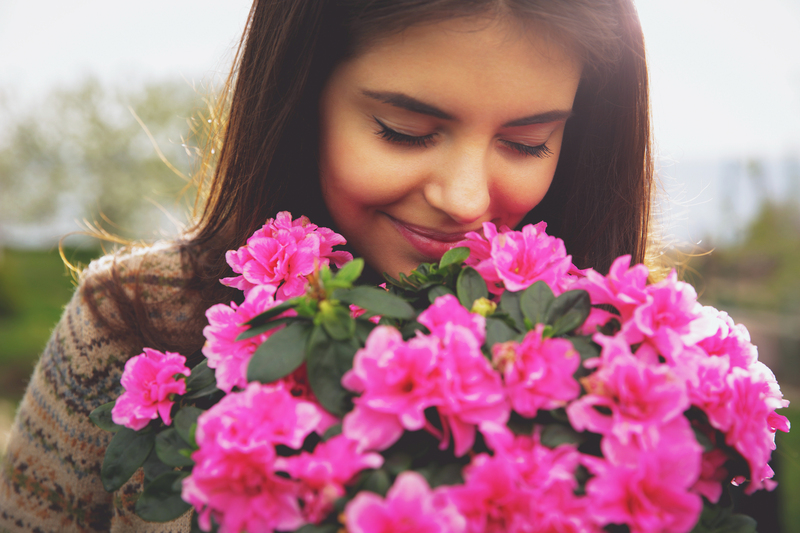Transforming Your Garden with Healthy Hydrangeas
Posted on 17/08/2025
Transforming Your Garden with Healthy Hydrangeas: A Comprehensive Guide
If you're looking for a breathtaking way to revitalize your garden, few plants can make a statement quite like the healthy hydrangea. With their lush blooms, impressive color variety, and low-maintenance appeal, hydrangeas are a favorite among both beginner and experienced gardeners. In this in-depth guide, we'll explore everything you need to know to transform your garden with vibrant, healthy hydrangeas--from how to plant and care for them, to best practices for maintaining robust, beautiful bushes year after year.

Why Choose Hydrangeas for Your Garden?
Hydrangeas have long been treasured for their showy blossoms and extended blooming period, which can last from late spring through fall. These hardy perennials are incredibly versatile and can be used as:
- Stunning focal points in garden beds
- Enthralling hedges or borders
- Eye-catching potted plants on patios or balconies
- Elegant additions to cottage and shade gardens
Their adaptability allows gardeners to enhance any landscape with ease. But how do you ensure your hydrangeas stay healthy and beautiful all season?
Understanding Hydrangea Varieties
Before planting, it's crucial to understand the unique types of hydrangeas and select the best fits for your specific climate, soil, and aesthetic. The four main varieties commonly grown in gardens include:
- Bigleaf Hydrangeas (Hydrangea macrophylla): Known for their large, spherical blooms that can be pink, blue, or purple depending on soil pH.
- Panicled Hydrangeas (Hydrangea paniculata): Feature cone-shaped flowers, usually in white or cream, that may age to pink or red.
- Smooth Hydrangeas (Hydrangea arborescens): Produce round, fluffy white or light green blooms, with 'Annabelle' being a popular cultivar.
- Oakleaf Hydrangeas (Hydrangea quercifolia): Named for their distinctive, oak-like leaves, these offer striking white blooms and bold fall foliage.
Each variety brings unique textures and colors to your outdoor space, making it easy to customize your garden's look with healthy hydrangeas.
How to Plant Hydrangeas for Optimal Health
Site Selection: The Key to Thriving Hydrangeas
Your hydrangea's health starts with choosing the right spot. Most hydrangeas prefer:
- Partial shade: Morning sun and afternoon shade offer the best conditions for lush growth and vibrant blooms.
- Well-drained, moist soil: Hydrangeas love moisture, but boggy areas can cause root rot. Amending heavy soils with compost improves drainage and fertility.
- Protection from harsh winds: Especially important for large-flowered bigleaf varieties that can be damaged by strong gusts.
Planting Steps for Healthy Hydrangea Growth
- Dig a hole twice as wide and just as deep as the root ball.
- Water the plant well before placing it in the hole.
- Gently loosen the roots to help them spread out.
- Refill with a mixture of garden soil and compost, ensuring the crown is at ground level.
- Water thoroughly to settle the soil.
- Mulch with organic material like bark to retain moisture and regulate soil temperature.
With the right start, your healthy hydrangeas will flourish and become a stunning highlight in your landscape.
Secrets to Growing and Maintaining Healthy Hydrangeas
Watering: Keeping Your Hydrangeas Hydrated
Hydrangeas are aptly named after the Greek word for water (hydor). Consistent watering is crucial, especially during dry spells. For optimal health:
- Water deeply once or twice per week rather than light daily sprinkling.
- Focus on the root zone, not the leaves, to prevent fungal disease.
- Mulch annually to help with moisture retention.
Feeding Your Hydrangeas for Vigorous Growth
For luscious blossoms and healthy leaves, fertilize your hydrangeas in early spring and, if needed, again in summer. Use a balanced, slow-release fertilizer or compost. Beware of over-fertilizing--too much nitrogen encourages leaves at the expense of flowers.
Pruning Practices for Healthy Hydrangea Bushes
Learning when and how to prune your hydrangeas will keep them healthy and full of blooms. Different hydrangea types require different pruning strategies:
- Bigleaf and oakleaf hydrangeas: Prune after flowering, as they bloom on "old wood" from last year's growth.
- Panicled and smooth hydrangeas: Prune in late winter or early spring; these bloom on "new wood" grown the same year.
Remove dead or crossing branches, and thin overcrowded plants for enhanced airflow and reduced risk of disease.
Solving Common Hydrangea Problems
Even the healthiest hydrangeas can experience a few issues. Recognize and treat common problems to maintain robust, vigorous bushes:
- Wilting: Usually a sign of heat or drought stress; water thoroughly and apply mulch.
- Brown leaf edges: Often caused by too little water or too much sun; relocate if possible or increase watering.
- Pest infestation: Aphids, spider mites, and slugs may appear--manage with insecticidal soap and hand-picking when necessary.
- Fungal diseases: Prevent with proper spacing, pruning for good airflow, and avoiding wet leaves.
Preventative Care Makes All the Difference
A little attention goes a long way in ensuring your hydrangea plants remain healthy. Remove faded blooms, clear away leaf debris, and inspect plants regularly for early signs of trouble.
Maximizing Bloom Quality and Color
Hydrangea Color: Soil pH and Blooms
Bigleaf hydrangeas are famous for their ability to change color based on soil chemistry. Here's how you can influence bloom hues:
- For blue flowers: Maintain acidic soil (pH below 6.0) by adding aluminum sulfate or organic matter like pine needles.
- For pink blooms: Raise soil pH (above 7.0) with garden lime.
- White hydrangeas: Generally stay white regardless of pH.
Test your soil annually to keep your hydrangea colors healthy and vibrant, and amend as needed.
Encouraging Abundant Blooming
To maximize flower production:
- Fertilize properly, as discussed above
- Prune appropriately for your hydrangea variety
- Protect buds from late frost with burlap or frost cloth if needed
- Ensure consistent moisture during bud formation
By providing ideal conditions, your healthy hydrangeas will put on a breathtaking floral display.
Design Ideas: Transform Your Garden with Hydrangeas
Hydrangea Landscaping Inspiration
Healthy hydrangeas can anchor a new landscape or refresh an established garden. Try these design ideas:
- Classic Borders: Plant hydrangeas in rows along pathways or fences for a traditional look.
- Mixed Garden Beds: Combine hydrangeas with ferns, hostas, and astilbes for layered texture in shady spots.
- Accent Plantings: Feature hydrangeas as solitary specimens surrounded by mulch or clipped boxwood hedges.
- Container Arrangements: Grow compact hydrangea types in pots to brighten patios and entryways.
Combining Hydrangeas with Other Plants
Hydrangeas pair beautifully with many garden companions. To enhance your plantings:
- Choose shady perennials for underplanting, such as hellebores and bleeding hearts.
- Use grasses or evergreens for year-round interest.
- Accent with spring bulbs for early color before hydrangeas bloom.
Strategic combinations create a garden that evolves through the seasons.
Winter Care and Long-Term Hydrangea Health
Protecting Hydrangeas Through Cold Months
Some varieties, particularly bigleaf and oakleaf hydrangeas, benefit from extra winter care:
- Mulch heavily around the base to insulate roots.
- Use burlap screens to shield from harsh winds or sunscald.
- Prune only when recommended, depending on type
With these precautions, your hydrangeas will emerge healthy and ready to bloom in spring.

Frequently Asked Questions About Healthy Hydrangeas
Can hydrangeas handle full sun?
Most hydrangeas thrive best in morning sun and afternoon shade. However, panicle hydrangeas can tolerate more sunlight if kept well-watered.
How can I improve poor-blooming hydrangeas?
Ensure correct pruning, avoid excess nitrogen fertilizers, and protect flower buds from frost. Adjust soil pH for bigleaf varieties if you desire a color change.
How often should I water my hydrangeas?
Deeply water 1-2 times per week, more often in hot, dry spells. Hydrangeas in containers may need daily checks.
Conclusion: Create a Lush Retreat with Healthy Hydrangeas
Whether you wish to create a classic cottage garden, an elegant border, or a striking patio display, healthy hydrangeas make transformation easy. By selecting the right varieties, providing proper care, and attending to their needs through the seasons, you'll enjoy years of vigorous growth and spectacular blooms. With these expert tips, you're well on your way to transforming your garden with healthy hydrangeas--and enjoying a lush, colorful outdoor retreat season after season.
Latest Posts
Transforming Your Garden with Healthy Hydrangeas
Achieving Orchid Perfection: A Care Guide
Unlock 3 Essential Tips for Keeping Flowers Fresh
Your Birth Flower: Decoding Its Hidden Messages About You
Romantic Blooms: The 5 Best Flowers for Valentine's Day Surprises






